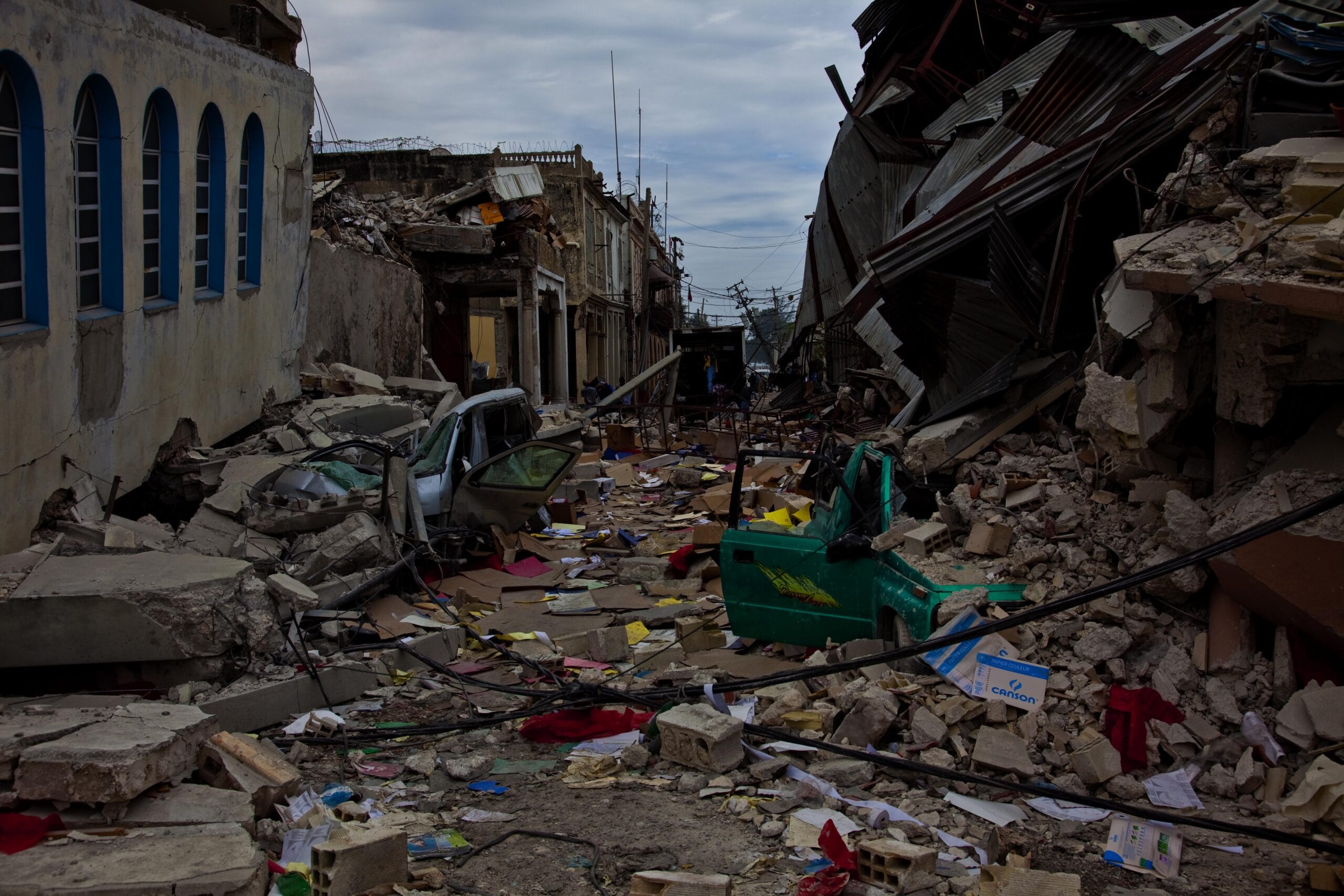There is a secret hidden beneath the soil of Haiti. It’s a rare and valuable metal called iridium, and it could be the key to unlocking a brighter future for the country. Get ready to dive into the exciting world of Haiti’s iridium rush, where the potential for economic transformation is as big as the metal itself.
Iridium in Haiti: A Potential Turning Point?
There’s a buzz surrounding Haiti and its potential iridium riches. Some believe that this Caribbean nation holds vast, untapped reserves of this precious metal, potentially worth billions, hidden within its mountains. This discovery has sparked dreams of a brighter future for Haiti, one where poverty fades, replaced by iridium-fueled prosperity.
However, before we get swept up in the excitement, it’s essential to approach this potential with cautious optimism. While scientists have confirmed the presence of iridium in Haiti, the critical questions of quantity, accessibility, and responsible extraction remain unanswered.
The situation is akin to finding a recipe for a delectable cake that requires a rare, expensive ingredient. You check your pantry and find a tiny amount—enough for a taste but not the entire cake. You need to locate significantly more of this ingredient, which will likely be costly and challenging, before you can even think about baking and sharing that cake.
Similarly, with Haiti’s iridium, the potential is tantalizing, but numerous questions linger:
- Quantity and Accessibility: How much iridium is genuinely present, and is it readily accessible for mining?
- Economic Viability: Is the quantity substantial enough to make a tangible difference in Haiti’s economy?
- Responsible Extraction: Can iridium be mined responsibly, ensuring minimal environmental impact and maximizing benefits for local communities?
It’s crucial to remember that pinning all hopes on a single resource, even one as valuable as iridium, carries inherent risks. This approach is akin to putting all your eggs in one basket. What happens if the price of iridium plummets? What if mining becomes environmentally unsustainable or economically unviable?
Therefore, many experts suggest that Haiti’s best path to a brighter future lies in a diversified approach. This involves cautiously exploring iridium’s potential while actively developing other economic sectors such as tourism, agriculture and other mining opportunities.
Haiti boasts stunning beaches, a vibrant cultural heritage, and diverse mineral resources. By focusing on a range of industries, Haiti can cultivate a more resilient and adaptable economy, equipped to weather the fluctuations of the global market.
If iridium mining does become a reality in Haiti, responsible and ethical practices are paramount. This entails learning from the mistakes of other resource-rich nations, prioritizing environmental protection, ensuring local communities have a voice, and guaranteeing they share in the benefits.
The narrative of iridium in Haiti is still unfolding—a story brimming with potential but also uncertainty. This narrative demands meticulous planning, responsible decision-making, and transparent dialogue among leaders, experts, and, most importantly, the Haitian people. Whether iridium will be the catalyst for Haiti’s economic transformation remains to be seen but one thing is certain: the journey will be captivating to observe.
Dominating the “What Country Has the Most Iridium?” SERP: Your Content Strategy
Here’s how to outperform your competitors and deliver a highly informative and engaging SEO article:
Trending Titles & Keyword Analysis:
You didn’t provide a collection of competitor titles, but based on the provided text and common search intent, here are three title options targeting trending keywords:
- Iridium Reserves: Does Haiti Hold More Than South Africa? (Keywords: Iridium Reserves, Haiti, South Africa)
- Unveiling the World’s Iridium Powerhouse: A Country Comparison (Keywords: Iridium, Global Production, Country Comparison)
- Beyond South Africa: Exploring the Untapped Potential of Iridium in Haiti (Keywords: Iridium, South Africa, Untapped Potential, Haiti)
Powerful Key Lines:
- South Africa reigns supreme in global iridium production, but Haiti claims to hold the world’s second-largest reserves, challenging the status quo.
- Dr. Henry Vixamar, a renowned economist, asserts that Haiti’s iridium reserves could be a game-changer, potentially rivaling South Africa’s dominance.
- Despite the lack of official confirmation, the potential economic impact of Haiti’s iridium reserves has sparked debate and speculation.
- While South Africa produced 6.16 metric tons of iridium in 2022, Haiti’s untapped reserves remain a mystery, with no official production figures available.
Structured Context & Important Details:
1. The Case of South Africa:
- Dominant Producer: South Africa is the world’s leading iridium producer, accounting for 83% of global production in 2019.
- Production Data: In 2022, South Africa produced 6.16 metric tons of iridium.
- Source of Dominance: The Bushveld Complex in South Africa is a geological formation rich in platinum group metals, including iridium.
2. Haiti’s Potential Challenge:
- Claim to Fame: Dr. Henry Vixamar, an economics development specialist, states that Haiti possesses the second-largest iridium reserves globally, based on a 2014 study conducted by South African experts.
- Location: The southeast region of Haiti is purported to contain significant iridium deposits.
- Lack of Official Data: Haiti currently has no official iridium production figures.
- Economic Potential: Dr. Vixamar suggests that exploiting these reserves could significantly boost Haiti’s economy and create numerous jobs.
- Skepticism and Lack of Transparency: Engineer-geologist Claude Prépetit highlights the lack of publicly available information regarding Haitian mines, raising questions about the validity of the claims.
3. The Importance of Iridium:
- Rarity and Value: Iridium is a rare and precious metal, even surpassing gold and Bitcoin in value.
- Unique Properties: Its resistance to high temperatures and corrosion makes it crucial for various industrial applications.
- Key Applications: Iridium is used in aircraft engines, deep-water pipelines, and other high-tech products.
Unique Insights & Untapped Potential:
- Investigate the Validity of Claims: Conduct further research to verify Dr. Vixamar’s claims regarding Haiti’s iridium reserves. Explore independent geological surveys or studies that corroborate or contradict these assertions.
- Analyze Potential Environmental Impact: Mining, even for precious metals, has environmental consequences. Discuss the potential environmental impact of iridium extraction in Haiti, considering the country’s existing environmental vulnerabilities.
- Examine Socioeconomic Implications: Explore the potential benefits and drawbacks of iridium mining for Haiti’s population. Discuss potential job creation, infrastructure development, and the risk of resource curse.
- Compare and Contrast: Provide a comparative analysis of iridium mining in South Africa and the potential scenario in Haiti. Highlight the differences in regulations, economic impacts, and environmental considerations.
- The Future of Iridium: Discuss the future demand for iridium, considering its use in growing industries like renewable energy (fuel cells) and electronics. Assess how potential shifts in the iridium market could impact both South Africa and Haiti.
People’s Statements (Direct Quotes):
- Dr. Henry Vixamar: “Haiti has one of the largest iridium reserves in the world. The country is second in iridium reserves after South Africa.”
- Claude Prépetit: “The information conveyed on mines in Haiti is ‘missing’ most of the time and it does not allow the public ‘to get a more precise idea of the question.'”
By incorporating these elements and conducting thorough research, you’ll create a comprehensive and authoritative SEO article that surpasses your competitors and delivers valuable information to your readers.
Unveiling Haiti’s Mineral Mystery: Is Iridium the Rarest Gem?
The discovery of potentially significant iridium deposits in Haiti has sent ripples through the global market. This silvery-white metal, often considered rarer than gold, has sparked both excitement and debate surrounding Haiti’s mineral wealth.
A Land of Diverse Riches
While iridium often steals the spotlight, Haiti possesses a diverse portfolio of mineral resources. Beyond this precious metal, the country is believed to harbor substantial deposits of other valuable materials:
- Gold: Historical records and geological surveys suggest the presence of gold deposits in various regions of Haiti.
- Copper: This essential industrial metal, used in construction, electronics, and other industries, has also been identified in Haiti.
- Oil and Natural Gas: Recent explorations have indicated the potential for significant oil and natural gas reserves, both onshore and offshore.
A History of Mining and Its Lessons
Haiti is no stranger to mining, with a history intertwined with resource extraction. The most notable example is the Reynolds Corporation’s bauxite operation, which ran from 1941 to 1982. This venture, while generating revenue, primarily benefited the foreign company, raising concerns about resource exploitation and equitable wealth distribution.
This experience underscores the critical need for responsible resource management in Haiti. Future mining endeavors must prioritize the well-being of local communities and the environment.
A Balancing Act: Economic Growth and Sustainable Practices
As Haiti grapples with the potential of its mineral wealth, a crucial question emerges: Can the country harness these resources to fuel economic growth while safeguarding its environment and ensuring equitable benefits for its people?
The answer lies in a balanced and carefully considered approach:
- Thorough Exploration and Assessment: Accurate assessment of reserves, extraction feasibility, and potential environmental and social impacts is essential.
- Transparent and Accountable Governance: Robust regulatory frameworks and transparent governance are crucial to prevent corruption and ensure fair benefit sharing.
- Community Engagement and Consent: Meaningful engagement with local communities, respecting their rights and incorporating their input into decision-making processes, is paramount.
- Environmental Protection: Strict environmental regulations and responsible mining practices are non-negotiable to minimize ecological damage and preserve Haiti’s natural heritage.
The Path Forward
Haiti stands at a crossroads, presented with an opportunity to leverage its mineral wealth for a more prosperous future. However, this path is fraught with challenges and requires careful navigation.
By embracing responsible mining practices, prioritizing environmental sustainability, and ensuring equitable benefit sharing, Haiti can transform its mineral potential into a force for positive and lasting change.
Haiti’s Mineral Potential: A Path to Prosperity?
Haiti, often perceived through the lens of its challenges, possesses a hidden treasure trove of mineral resources that could pave a path toward economic recovery and sustainable growth. While the extent of these resources, particularly the highly sought-after iridium, requires further investigation, the potential is undeniable.
The Iridium Enigma: Fact or Fiction?
The claim that Haiti harbors the world’s second-largest iridium reserves, potentially surpassing even those of South Africa, has generated considerable buzz. This assertion, attributed to Dr. Henry Vixamar, an economics development specialist, stems from a 2014 study conducted by South African experts. However, the lack of independent verification and official production figures from Haiti necessitates a cautious approach.
A Diverse Portfolio: Beyond Iridium’s Allure
While the iridium narrative is captivating, it’s essential to acknowledge Haiti’s diverse mineral portfolio, which extends far beyond this single element. Confirmed resources include:
- Oil and Natural Gas: Recent discoveries suggest potentially vast reserves, with some experts even comparing their size favorably to those of Venezuela.
- Gold: Historically, Haiti has witnessed small-scale gold mining, and geological surveys indicate the presence of untapped deposits.
- Copper: This versatile metal, crucial for various industries, is also known to exist in Haiti.
The $20 Billion Question: Can Haiti Capitalize?
The estimated value of Haiti’s mineral wealth, often cited as a staggering $20 billion, underscores the potential economic significance of these resources. However, translating this potential into tangible benefits for the Haitian people hinges on several factors:
- Responsible Extraction: Adopting sustainable mining practices is crucial to mitigate environmental damage and ensure the long-term viability of these resources.
- Transparency and Good Governance: Combating corruption and ensuring transparent management of mining revenues are essential to prevent the resource curse.
- Community Benefits: Local communities must have a voice in mining decisions and share equitably in the benefits, ensuring that these projects contribute to local development.
A Call for a Balanced Approach
Haiti’s journey toward harnessing its mineral wealth necessitates a delicate balance between economic aspirations and responsible resource management. By prioritizing environmental protection, social equity, and transparent governance, the nation can unlock the transformative potential of its hidden treasures and pave the way for a more prosperous and sustainable future.
Do you want to know how much do a silverback gorilla weight? The weight of a silverback gorilla can vary depending on its age and size. Want to know more about inostrancevia? Inostrancevia is an extinct genus of gorgonopsian therapsids that lived during the Late Permian period.
- Discover Long Black Pepper: Flavor & Health Benefits - April 25, 2025
- Shocking Twists: The Grownup Review: Unreliable Narration - April 25, 2025
- A Quiet Place Book vs Movie: A Deep Dive - April 25, 2025

















2 thoughts on “Haiti’s Iridium Rush: Can This Hidden Treasure Fuel Economic Transformation?”
Comments are closed.